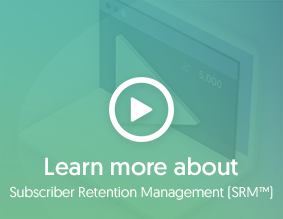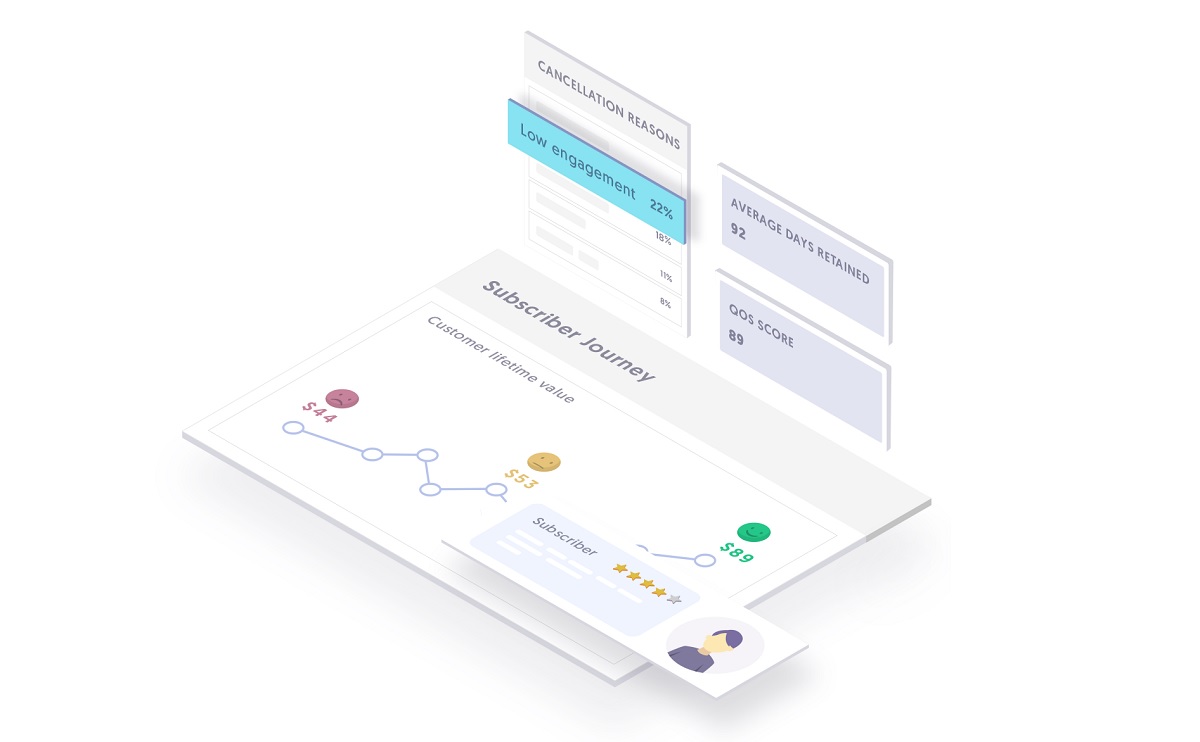 Creating Simple Workflows with ChurnIQ and Zapier
Creating Simple Workflows with ChurnIQ and Zapier
In a recent blog post we described how Zapier can be used with ChurnIQ to create self-managing marketing automation engines.
Today we will give you some simple scenarios that you can experiment with as you build or fine-tune your own subscriber marketing strategy.
Regardless of where you focus your attention, your tactics at each stage of the lifecycle should always have 3 components:
- A clear & simple target outcome
- An aligned messaging action
- A measurement of impact
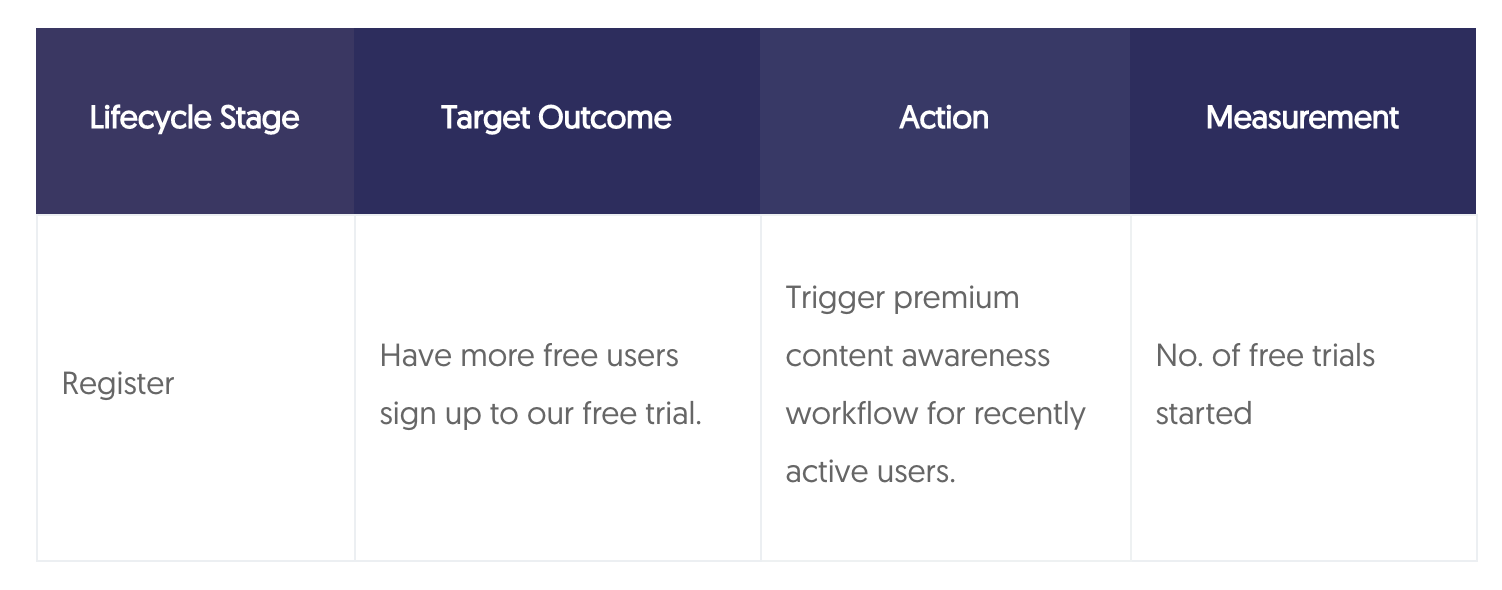
With each of these examples we will use this same structure to describe how you harness your data to build effective & flexible retention messaging strategies. We will focus on the 3 main stages in the lifecycle, 'trial', 'paying', and 'churned'.
Scenario 1: Free Trials that are about to expire
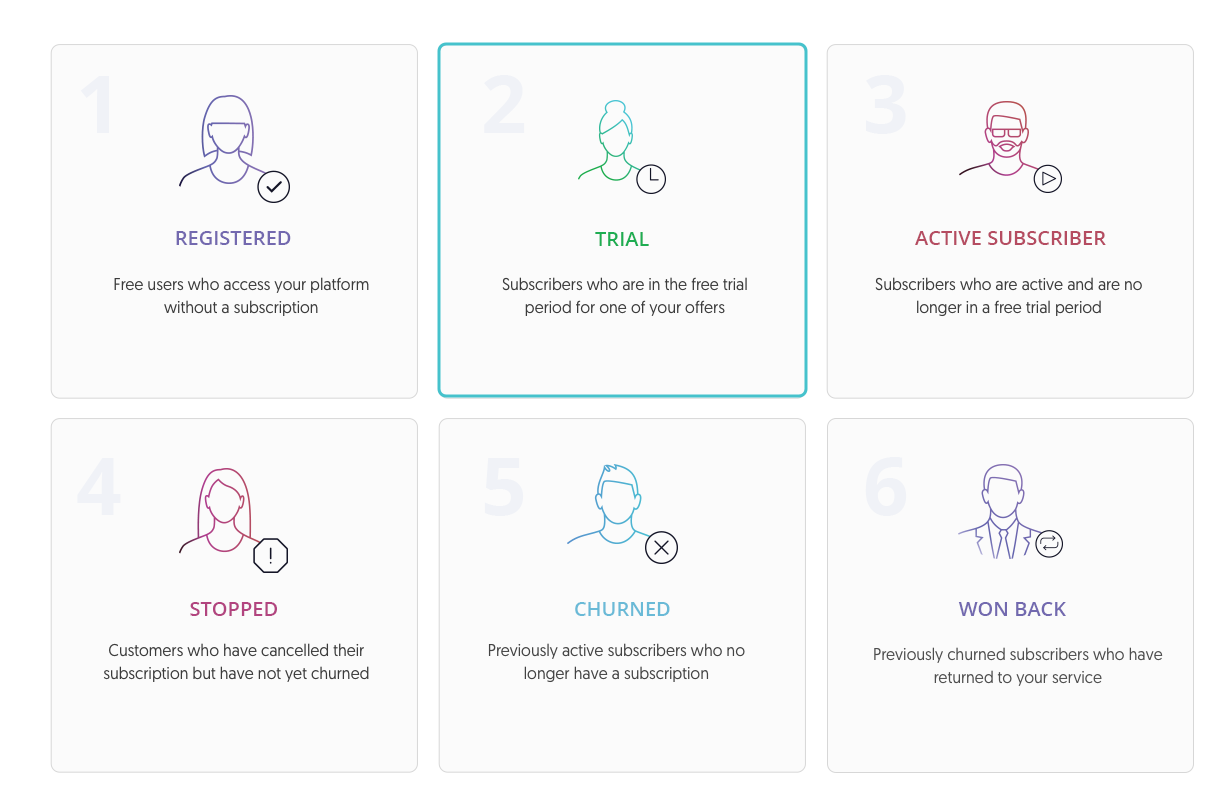
Free trial conversion is one of the more important indicators of the growth health of a subscription service. Over 60% is good, over 65% is very good, and over 70% is great.
The free trial is also the point in the subscriber lifecycle where communication is most powerful, and has the strongest effect on the customer relationship.
As a result, the days leading up to the end of the free trial are critical for transforming a customer who is just taking a look, into one who is here to stay.
To automate an action for this segment, just follow these steps:
- Define the segment in the ChurnIQ scheduler (based on your trial length and days since trial start, eg. if your trial is 10 days then "Subscription start date is 7 days ago")
- Connect the webhook to an email platform (eg. Mailchimp) in Zapier
- Send the customer list to the relevant audience/list in the email platform (eg. ‘trial ending’) and connect to an email campaign about 'upcoming content'.
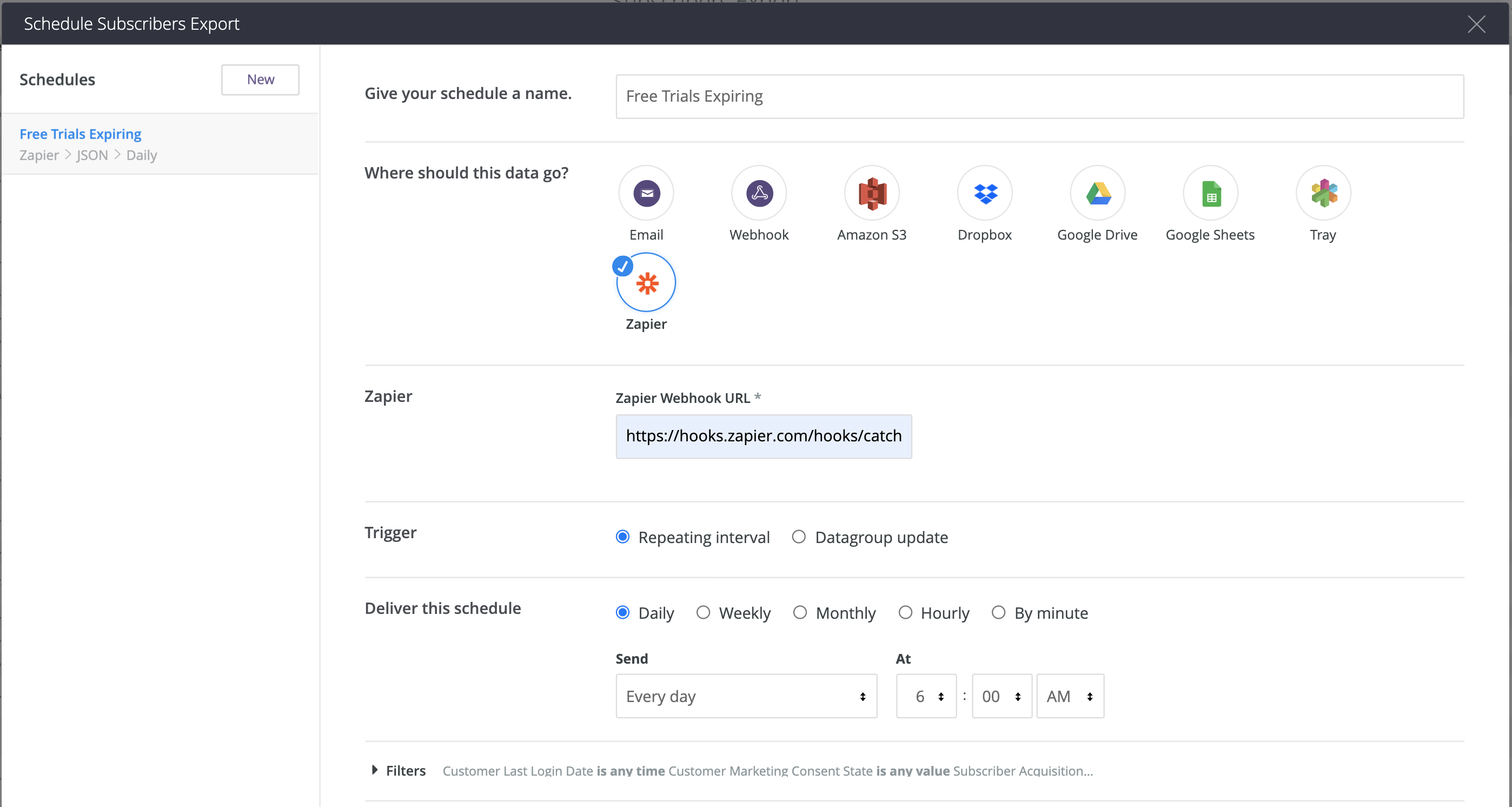
And that's it.
To measure the impact, you can initially use the trial conversion rate, and over time 'revenue per free trial started'. You can add further nuance by targeting only subscribers to particular offers (annual or monthly), or via specific channels (eg. ‘web’).
Marginal improvements on your trial conversion rate have a significant cumulative effect on growth. If you have a monthly subscription fee of $5.00, and an average subscriber lifecycle of 3 months, each additional conversion approximates to an additional $15 - against comparatively low costs for additional email campaigns. Across thousands of free trial users, this really adds up.
Scenario 2: Inactive Paying Subscribers
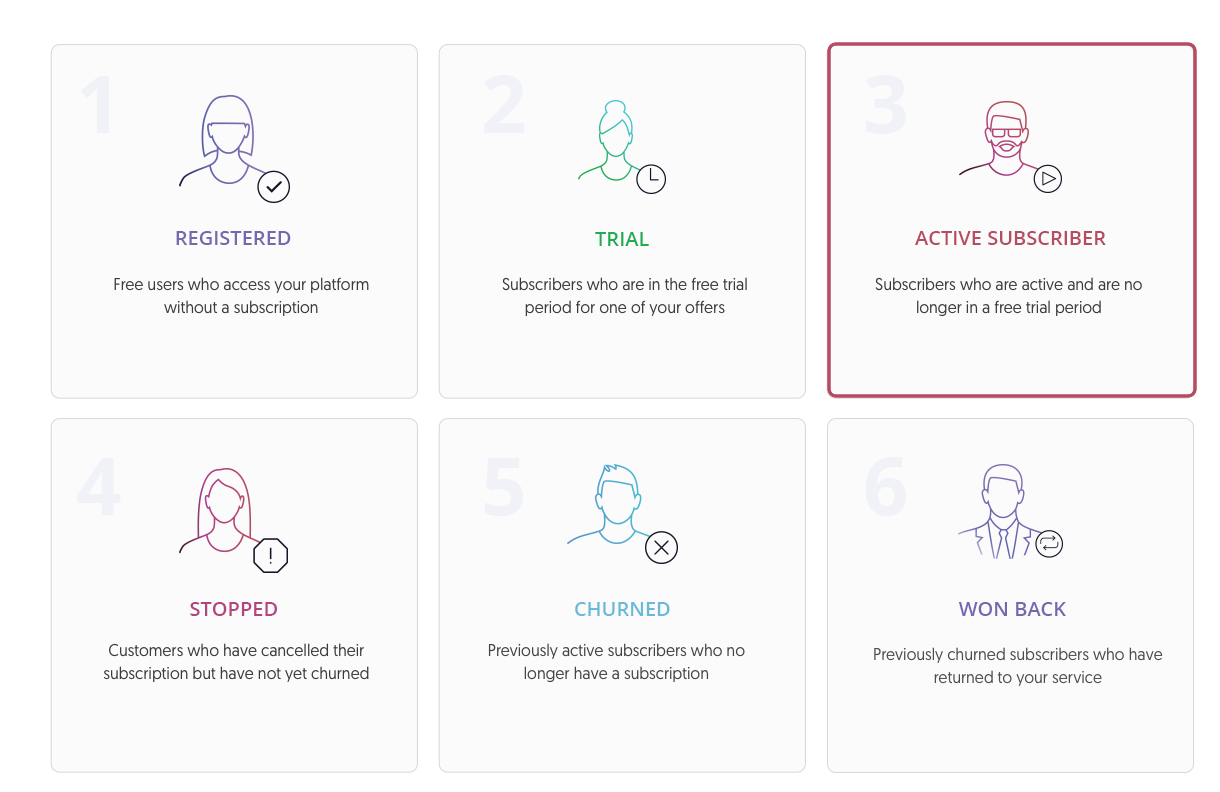
Another scenario to act on is inactive subscribers. Some can be nervous about engaging this group, as there is a risk of reminding the customer that they are paying for a service they longer use. This risk is often exaggerated, but you can proceed cautiously in order to limit this risk using ChurnIQ.
For example, you can only choose customers within a specific range of inactivity that has a recent focus, eg. inactive for 15-30 days. This avoids the risk of disturbing long term inactive (or dormant) subscribers.
Reactivating subscribers is an especially important objective in the initial 2 months of a subscription. Why? It's simple, during this time the customer either establishes a habit of regularly accessing your content - or doesn't.
To create an action for this group, use these steps:
- Define the segment in ChurnIQ (last login is ‘30 days ago for 15 days’’ - this means between 15 & 30 days ago)
- Create a simple Zapier action to connect ChurnIQ to your messaging platform
- Send the segment to a campaign that promotes recent content on the platform
You can track the effectiveness of this action by either using the customer IDs of the targeted group to check if they were motivated to log in. Or by using engagement data (eg. an increase in average daily active subscribers).
Scenario 3: Subscribers who churned > 3 months ago for content reasons
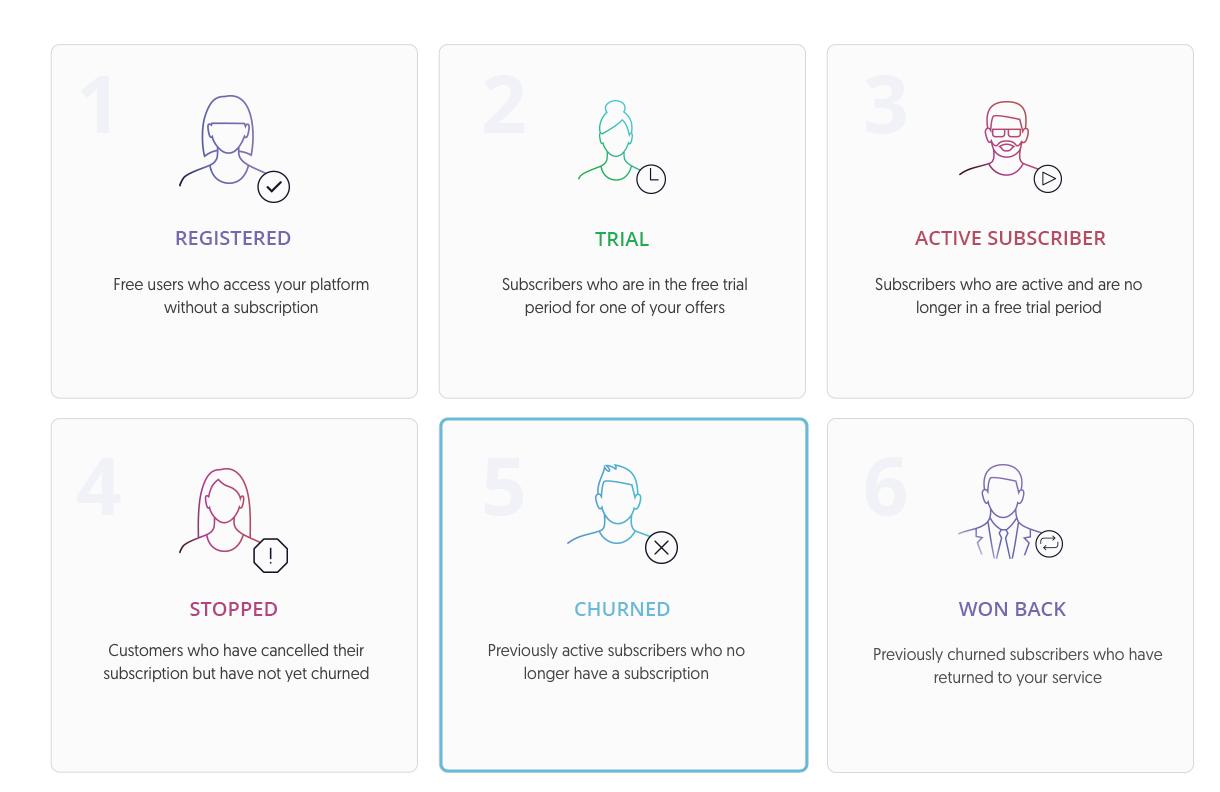
Churned subscribers matter for one main reason - they are far more likely to create a new subscription than the average potential customer. This means a higher return on marketing effort and a lower acquisition cost.
First of all, churned subscribers are not a lost cause, far from it. Understanding that churn is a natural part of a long-term customer relationship is key to building a loyal subscriber base in that longer term.
One easy starting point here is to focus on a subset of churned subscribers, like those who churned for content related reasons. You can also include those who 'switched to an alternative service' in this group.
Ideally you should target this group after a few months have elapsed, allowing for a noticeable change in your available content.
To create this action, just follow these steps:
- Define the group as subscribers whose 'subscription end date is 3 months ago’, and whose churn reason is ‘not enough relevant content’ or ‘alternative service’.
- Using a Zapier webhook, connect ChurnIQ to your messaging platform
- Send this segment to a special email campaign that highlights your new content additions over the past 3 months
You can use customer IDs for the customer groups targeted to track the impact of this action. By pasting the customer ID list for each exported list into customer ID filter in the Subscriber Daily dashboard, you can track which customers have reactivated on your platform.
Experimenting with Segments
These are just a few ideas to get started with as you build your marketing automation engine - but there are countless others.
At every step you can focus on subscriber segments that you can classify by 4 attribute types:
- Temporal attributes (time since registering, subscribing, or cancelling)
- Subscription attributes (Offer, price, subscription lifetime, annual vs. monthly)
- Broad user attributes (Channel or country)
- Behavioral attributes (Time since last active, level of engagement, reason for churning)
You can create ever more nuanced segments by combining these attributes, but most important is that in each case you have a clear outcome, a suitable message, and metric for measurement in mind.
By focusing on each of the lifecycle stages separately, you can build a marketing automation engine that follows 3 golden rules for subscriber marketing strategies:
- It’s simple enough to maintain long term
- It captures multiple aspects of the problem
- It presents clear action points
Which, or how many, segments to target depends on your unique circumstances and the retention metrics that matter to you.
To learn more about pricing strategies for subscription business, grab our recent eBook.


